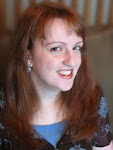 Nya is an orphan struggling for survival in a city crippled by war. She is also a Taker—with her touch, she can heal injuries, pulling pain from another person into her own body. But unlike her sister, Tali, and the other Takers who become Healers' League apprentices, Nya's skill is flawed: She can't push that pain into pynvium, the enchanted metal used to store it. All she can do is shift it into another person, a dangerous skill that she must keep hidden from forces occupying her city. If discovered, she'd be used as a human weapon against her own people. (Amazon)
Nya is an orphan struggling for survival in a city crippled by war. She is also a Taker—with her touch, she can heal injuries, pulling pain from another person into her own body. But unlike her sister, Tali, and the other Takers who become Healers' League apprentices, Nya's skill is flawed: She can't push that pain into pynvium, the enchanted metal used to store it. All she can do is shift it into another person, a dangerous skill that she must keep hidden from forces occupying her city. If discovered, she'd be used as a human weapon against her own people. (Amazon)I knew I had to read The Shifter when I heard about the magic. Healing powers with a dark side? That's not something I'd seen before. Janice Hardy didn't disappoint.
Poor Nya, the girl with the gift, ended up in one wrenching, no-good-solution problem after another. Nya's also our first-person narrator and her entertaining voice hooked me on the first page. Despite her war-orphan history, Nya's brimming with optimism -- sometimes too much of it as she devises reckless plans to save the thing that matters most: her sister.
The plot dives forward in this book, with boatloads of twists to keep the reader guessing, worrying, and turning pages. The setting is beautiful -- a tropical city spread over a lake -- but the author masterfully sneaks these descriptive tidbits and the history of the war in as we go.
For any reluctant young reader who doesn't like "the boring parts," they're in luck. This book doesn't have any. I'm still biting my nails for the last book of this trilogy, Darkfall, to come out. The second book, Blue Fire, exceeded expectation by both upping the stakes and pulling a cool twist on a magic I thought I'd figured out.
Thoroughly enjoyable reading for middle grade on up.
Market: Middle Grade Fiction
Language: None
Sensuality: None
Violence: Mild-Moderate
Mature Themes: War, death, inflicting pain, ends versus means.
Book formats:

































